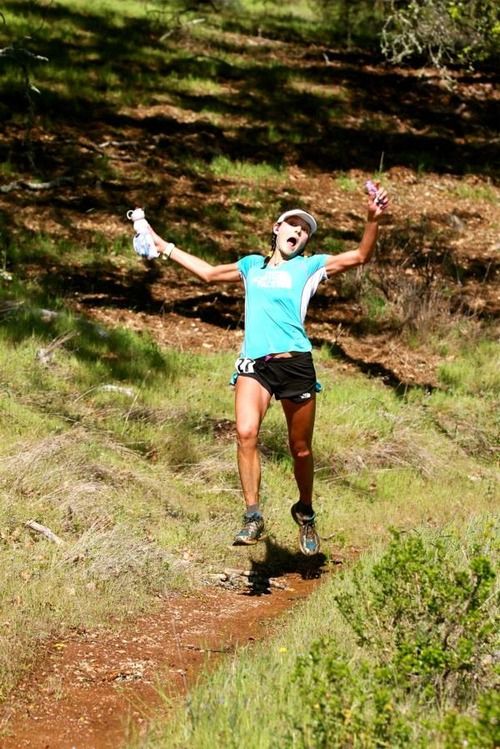 A runner’s life adventure is one of persistence, growth, and the thrill of stumbling upon new challenges. I never saw myself as a long-distance runner. In fact, running was a foreign concept to me until I experienced a series of events that radically changed my ideas about fitness and personal achievement.
A runner’s life adventure is one of persistence, growth, and the thrill of stumbling upon new challenges. I never saw myself as a long-distance runner. In fact, running was a foreign concept to me until I experienced a series of events that radically changed my ideas about fitness and personal achievement.
This article takes you through the glow-up of my running-filled life. I want to share how I transitioned from a casual jogger to someone for whom running isn’t just about the physical workout. It’s about the inner drive and the sense of accomplishment that fuels every step. My adventure progressed through five distinct stages: Purpose, Development, Awareness, Uniqueness, and Adversity. Each stage taught me valuable lessons that extended far beyond pounding the pavement.
Stage 1: Purpose
Motivation is very important when it comes to running. In many sports, effort and drive matter, but with running, mental strength can easily outshine pure physical capacity. Unlike other activities, running is hampered only by the amount of pain and exhaustion you are willing to push through. I realized early on that enjoying the sport was what truly fueled my progress.
When I first started, I created a simple self-check to remind myself why I was running. I would ask, “Is what I’m doing fun even though it’s hard?” The balance between struggle and enjoyment kept me going through long, punishing training sessions and even tougher days.
This clear purpose not only kept me motivated but also pushed me to experiment with new approaches. Whether it was switching up my running routes, joining a group session, or mixing in interval training on the treadmill, every change sprang from the need to avoid routine monotony. Running transformed from a daily chore into a rewarding and engaging part of my life.
Stage 2: Development
At first glance, running may seem simple, but there is a deep well of knowledge behind it. I began to realize that effective training isn’t about accumulating endless miles—it’s about understanding how to structure workouts, knowing when to rest, and adjusting your pace at various parts of a run. In those early years, learning the fundamentals became the backbone of my progress.
Along the way, I sought advice from various sources, some better than others. Over time, I learned that the best insights come from experienced athletes who have already been through the ups and downs. They mix real-life experience with proven scientific methods rather than relying solely on trends or one-off studies. This all-in-one approach taught me that there is always something to learn, even in a sport that appears straightforward on the surface.
Every run logged, every sweaty mile tracked, helped me build an internal library of what worked best. I fine-tuned my sprint timings and balanced long, steady runs with bursts of speed. With each practice, I discovered that paying attention to these details could really add a boost to my overall performance. Slowly but surely, every training session contributed to a more intelligent and efficient running strategy.
Stage 3: Awareness
I eventually learned that becoming a great runner is not merely about following guidelines—it’s about developing a keen awareness of how your body and mind respond under pressure. This awareness means listening to your body’s signals, understanding the reasons for fatigue or soreness, and quickly adjusting when things aren’t working as planned.
There were many moments when unpredictable challenges cropped up. Some days, a planned workout would suddenly feel off, forcing me to slow down or add extra recovery time. This constant self-check pushed me to become more than just a participant—it made me a smart problem-solver during every run.
Over time, this growing awareness allowed me to spot subtle changes in my running form, hydration levels, and even the slight effects of different terrains. Simple modifications in technique or gear sometimes led to eye-catching improvements. Each run became a chance to learn something new about endurance and resilience, enriching both my physical capability and my mental strength.
Stage 4: Uniqueness
No two running adventures are identical. While many foundational rules hold true for all, I soon recognized that every runner has a unique mix of strengths and challenges. This stage required me to tailor general best practices so that they perfectly suited my own needs.
For instance, while some friends thrive on high-mileage routines, others find a moderate pace better supports their bodies. In my case, I noticed I naturally had endurance but sometimes found maintaining speed to be difficult. To counter this, I experimented with interval training and tempo runs alongside my longer, slower distance sessions, thereby creating a balance that truly worked for me.
Keeping a detailed training log was a breakthrough moment. I recorded every detail—from workout types and terrain conditions to energy levels and recovery time. Analyzing these patterns over weeks and months helped me craft a personalized plan that mixed well with my lifestyle. This unique, personalized approach not only improved my performance but also deepened my love for what I do.

Finding true joy in running means accepting the full spectrum of the experience. The highs of accomplishment and the lows of setbacks and pain are all integral parts of a runner’s journey, and embracing this reality is key to a fulfilling relationship with the sport.
Stage 5: Adversity
At some point during any runner’s adventure, challenges inevitably emerge. Once I had mastered the basic techniques and training routines, I began to feel complacent. Confidence in my well-rehearsed routines occasionally led me to rest too easily on my past achievements. However, growth required constant pressure to push beyond my comfort zone.
Adversity in running manifests in many ways. There are days when the pavement feels unusually unforgiving, when every step is a battle, or times when fatigue and injury threaten to slow progress. I learned to view these moments not as failures but as opportunities to test my limits and rethink recovery strategies.
One practical tactic was to set small, new challenges regularly. Whether it involved testing a new pace, trying out trail running instead of racing the road, or incorporating cross-training such as cycling or swimming, every fresh experiment kept boredom at bay. This proactive strategy pushed me to continuously refine my skills and maintain a spirited attitude—even during setbacks. Running is an ongoing adventure with no final destination, and every stride brings fresh insights and renewed inspiration.
Looking Back and Moving Forward
The transformation from someone who once dismissed running to a life devoted to it has been nothing short of remarkable. Each of the five stages not only improved my athletic performance but also enriched my overall outlook on life. I grew to appreciate the gradual process of self-improvement and the inner strength I discovered along the way.
My earliest runs were filled with uncertainty and occasional frustration. I vividly recall those initial outings when the distances felt impossible and my body was unaccustomed to the physical demands I imposed on it. However, by steadily applying the lessons learned during each stage, running evolved into a tool for measuring progress, overcoming obstacles, and celebrating even small victories.
Today, running is far more than a method to stay fit. It reminds me to set clear goals, commit to lifelong learning, and remain adaptable in the face of challenges. Even when the road gets rough, each step offers a chance to pick up on new techniques and to level up my performance. I continually look forward to exploring new strategies and testing the boundaries of what I can accomplish.
For anyone hesitating to start, remember that no one is born a runner. Transitioning into a running lifestyle can begin with a single step, a shift in mentality, and a firm commitment to personal goals. With ongoing effort and a willingness to adjust, anyone can find deep satisfaction in the simple yet profound act of running.
Common Reflections and Tips
If you’re uncertain about committing to running or feel stuck in your training, consider these reflections that guided me during my own adventure:
Embrace the Adventure
Every runner’s path is different. Instead of comparing your progress to that of others, focus on your personal improvements. Even on days when goals aren’t fully met, recognize that every effort teaches you something valuable.
Stay Flexible With Your Goals
Rigid goals can often lead to unnecessary frustration, particularly when life presents unexpected challenges. Allow yourself the freedom to readjust your training plans. Even a short run on a difficult day is an achievement in itself.
Celebrate Small Victories
Progress isn’t always about finishing times or the distance covered. Often, it’s about the improvement in resilience and the overall sense of well-being. Focusing on these small wins makes every run more rewarding.
Final Thoughts
Running has been a testament to the power of persistence, adaptation, and the willingness to push past limits. My adventure from a non-runner to someone whose life revolves around running underscores the importance of setting intentions, learning continuously, staying aware of personal limits, and customizing your approach to overcome adversity. Every run is a chance to grow a little more and to gain fresh insights into who you are.
This story serves as a reminder that progress is ongoing. Whether you are just starting out or have been at it for years, there is always another lesson to learn and another milestone to reach. So lace up your shoes, head out onto the track or trail, and see where your running adventure leads you next. Remember, running isn’t solely about the physical act—it’s about the dedication, the mindset, and the joy discovered along the way.

Proudly powered by WordPress
